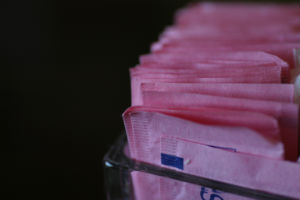3 Artificial Sweeteners to Avoid
HEALTH, 6 Jul 2015
Dr. Edward F. Group, Global Healing Center – TRANSCEND Media Service
 Artificial sweeteners are everywhere, and if you’re like me, you avoid them at all costs. Things like aspartame, sucralose, and saccharin can be found in a variety of processed diet foods; however, even some foods you wouldn’t expect contain these chemicals. Whether you’re knowingly poisoning yourself with these toxins or not, you must know that their presence in your diet, regardless of the amount, have no purpose for your body. Not eliminating them is sometimes the only obstacle many people have toward achieving good health.
Artificial sweeteners are everywhere, and if you’re like me, you avoid them at all costs. Things like aspartame, sucralose, and saccharin can be found in a variety of processed diet foods; however, even some foods you wouldn’t expect contain these chemicals. Whether you’re knowingly poisoning yourself with these toxins or not, you must know that their presence in your diet, regardless of the amount, have no purpose for your body. Not eliminating them is sometimes the only obstacle many people have toward achieving good health.
The Three Worst Artificial Sweeteners
Avoiding artificial sweeteners should already be a no-brainer. Here are the top three sweeteners you should look out for:
- Saccharin
Saccharin was the first artificial sweetener and is still a popular sugar substitute used by many people across the world. Fortunately, it’s not as popular in diet foods as it used to be. You will typically find saccharin in pink packets of artificial sweetener, like Sweet‘N Low. Saccharin can encouragecause allergic reactions in some people, including headaches, breathing difficulties, skin eruptions, and diarrhea. [1] There are also studies tying saccharin to cancer.
- Sucralose
Sucralose, or commonly known by its trade name “Splenda,” is another commonly-used artificial sweetener. This sweetener, along with aspartame, is often used in diet sodas and other weight loss and diabetic-friendly foods. While it is true that Sucralose starts off with natural sugar as the starting material, it is chlorinated and goes through a very unnatural process. Supposedly, Sucralose is not digested and travels through the GI tract unchanged; however, a recent analysis shows the exact opposite. [2] There is some research also showing that Sucralose affects glucose control in diabetics and prediabetics, something that nonnutritive sweeteners are designed to avoid. [3] Considering that Sucralose was discovered while testing for a new insecticide (at least that’s what’s been widely reported), why would we want to ingest this at any amount?
- Aspartame
Aspartate and glutamate are found in aspartame and behave as neurotransmitters in the brain. Having an excess of these neurotransmitters kills certain neurons by allowing the inundation of calcium. This influx provokes excessive amounts of free radicals which kill the cells. [4] The sweetener also contains methanol, which is subsequently metabolized into formaldehyde. There’s a host of other issues with aspartame, and I firmly believe this to be one of the worst artificial sweeteners on the market.
Alternative Natural Sweeteners
I always suggest that everyone, including healthy individuals, remove added sugars from their diet, including artificial sweeteners. Organic coconut sugar or, better yet, raw organic honey are much better alternatives to satisfy sweet cravings within the confines of a healthy diet.
References:
- Medicine Net. Saccharin: What are the cons? Medicine Net.
- Schiffman SS, Rother KI. Sucralose, a synthetic organochlorine sweetener: overview of biological issues. J Toxicol Environ Health B Crit Rev. 2013;16(7):399-451. doi: 10.1080/10937404.2013.842523.
- Pepino MY, Tiemann CD, Patterson BW, Wice BM, Klein S. Sucralose affects glycemic and hormonal responses to an oral glucose load. Diabetes Care. 2013 Sep;36(9):2530-5. doi: 10.2337/dc12-2221.
- Iyyaswamy A, Rathinasamy S. Effect of chronic exposure to aspartame on oxidative stress in the brain of albino rats. J Biosci. 2012 Sep;37(4):679-88.
_____________________________
Have you given up artificial sweeteners? What was your motivation? Please share with us; join the discussion below!
Dr. Edward F. Group III, DC, NP, DACBN, DCBCN, DABFM
Go to Original – globalhealingcenter.com
DISCLAIMER: The statements, views and opinions expressed in pieces republished here are solely those of the authors and do not necessarily represent those of TMS. In accordance with title 17 U.S.C. section 107, this material is distributed without profit to those who have expressed a prior interest in receiving the included information for research and educational purposes. TMS has no affiliation whatsoever with the originator of this article nor is TMS endorsed or sponsored by the originator. “GO TO ORIGINAL” links are provided as a convenience to our readers and allow for verification of authenticity. However, as originating pages are often updated by their originating host sites, the versions posted may not match the versions our readers view when clicking the “GO TO ORIGINAL” links. This site contains copyrighted material the use of which has not always been specifically authorized by the copyright owner. We are making such material available in our efforts to advance understanding of environmental, political, human rights, economic, democracy, scientific, and social justice issues, etc. We believe this constitutes a ‘fair use’ of any such copyrighted material as provided for in section 107 of the US Copyright Law. In accordance with Title 17 U.S.C. Section 107, the material on this site is distributed without profit to those who have expressed a prior interest in receiving the included information for research and educational purposes. For more information go to: http://www.law.cornell.edu/uscode/17/107.shtml. If you wish to use copyrighted material from this site for purposes of your own that go beyond ‘fair use’, you must obtain permission from the copyright owner.